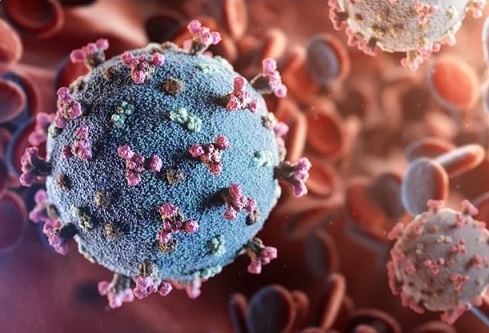Researchers from University of California Are Warning That Hidden Viral Reservoirs Are Fueling Long COVID Symptoms
Nikhil Prasad Fact checked by:Thailand Medical News Team Oct 30, 2025 1 month, 3 weeks, 4 days, 11 hours, 3 minutes ago
Medical News: Persistent Virus Found in Long COVID Patients
Researchers from the University of California Irvine’s School of Medicine and TechImmune LLC have uncovered critical insights into why millions continue to suffer from long COVID symptoms years after their initial infection. The international team, led by Dr. Lbachir BenMohamed, found that lingering reservoirs of SARS-CoV-2—the virus responsible for COVID-19—may persist in multiple organs, driving chronic inflammation and prolonged illness. Affecting over 420 million people globally, long COVID, or post-acute sequelae of COVID-19 infection (PASC), presents more than 200 symptoms ranging from fatigue and “brain fog” to heart, lung, and neurological problems.
 Researchers from University of California Are Warning That Hidden Viral Reservoirs Are
Researchers from University of California Are Warning That Hidden Viral Reservoirs Are
Fueling Long COVID Symptoms
These findings, detailed in this
Medical News report, reveal that even after patients test negative for active infection, viral remnants—either full viruses or fragments of viral RNA—can stay hidden in tissues for months or years. These persistent particles continuously stimulate the immune system, causing exhaustion of protective CD4+ and CD8+ T cells. This process may explain the unrelenting inflammation, cognitive impairment, and multi-organ damage seen in many long COVID sufferers.
Viral Remnants Found Across Multiple Organs
The UC Irvine scientists reviewed numerous clinical studies and found evidence of persistent viral RNA and proteins in the lungs, intestines, appendix, brain, and even reproductive organs. Some autopsies revealed viral traces more than 300 days after infection. In one striking case, SARS-CoV-2 RNA and proteins were detected in intestinal and lung tissues more than a year after recovery. Children with long COVID were also found to harbor viral material in their tonsils and adenoids for up to 10 months, while adult patients showed persistent viral fragments in the colon and olfactory tissues.
Further analysis showed that these lingering viral components could trigger hyperactivation of immune pathways, leading to fatigue, anxiety, cardiovascular strain, and neurological issues such as memory loss and headaches. In some individuals, viral proteins like the spike and nucleocapsid persisted even without active viral replication, suggesting that fragments alone might sustain inflammation and immune dysfunction.
Why Some People Fail to Clear the Virus
The study points out that older, unvaccinated, or immunocompromised patients are more prone to develop such viral reservoirs, as their immune systems may struggle to fully eliminate the virus during acute infection. These reservoirs act like hidden “factories,” releasing antigens that keep the immune system on constant alert, preventing recovery. The team emphasized that not all patients with long COVID have detectable reservoirs, meaning multiple overlapping mechanisms—such as microclotting, metabolic dysfunction, or reactivation of dormant viruses like Epstein–Barr—may also play role
s.
Path to Future Treatments
To better understand and treat persistent infections, the UC Irvine researchers have developed special “humanized” mouse models expressing human immune and viral receptor genes. These models help scientists observe how the virus hides in tissues and test potential treatments that could clear these reservoirs. Experimental strategies being explored include antiviral drugs like Paxlovid, immunotherapies aimed at reactivating exhausted T cells, and novel vaccine approaches that boost tissue-resident immunity without overstimulating the immune system.
A Continuing Global Challenge
The researchers conclude that solving the “SARS-CoV-2 reservoir problem” may be key to curing or alleviating long COVID. They call for advanced diagnostic tools capable of detecting viral RNA or proteins in blood, stool, or tissue samples to identify affected patients more accurately. Despite scientific progress, they warn that the long-term health and economic burden of chronic long COVID remains enormous and that developing precise therapies to eliminate persistent viral material is now a global health priority.
The study findings were published in the peer-reviewed journal: Viruses (MDPI).
https://www.mdpi.com/1999-4915/17/10/1310
For the latest on Long COVID, keep on logging to Thailand
Medical News.
Read Also:
https://www.thailandmedical.news/articles/coronavirus
https://www.thailandmedical.news/articles/long-covid
